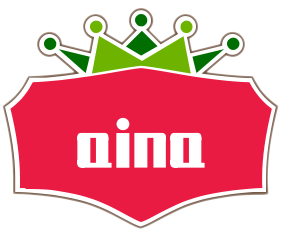Overview
Ostium is a decentralized perpetual exchange built on Ethereum Layer 2, aimed at providing on-chain exposure to traditional and crypto markets through synthetic perpetual contracts.
Rather than tokenizing real-world assets, it mirrors price movements of assets like currencies, commodities, indices, and crypto, using on-chain oracles to deliver near real-time pricing.
The platform emphasizes non-custodial access, fast settlement, and a shared liquidity approach across markets, enabling traders to take leveraged long or short positions on a wide range of assets.
What is Ostium
-
Decentralized perpetual trading protocol: Users trade perpetual contracts that track the price of real-world assets, with leverage options up to high multiples.
-
On-chain, non-custodial: Traders maintain control of funds and interact directly with smart contracts, without handing assets to a centralized intermediary.
-
Cross-asset coverage: Markets include crypto, FX, commodities, and indices, expanding access to traditional and digital assets within a single platform.
How Ostium works
-
Synthetic perpetuals: Positions are funded and settled on-chain using collateral, with price feeds sourced from trusted oracles to reflect real-world asset values.
-
Oracles and data feeds: Price data comes from established networks (e.g., Chainlink, Stork) to minimize latency and improve reliability.
-
Leverage and liquidity: The platform provides high-leverage options and utilizes shared liquidity across markets to enhance execution and reduce slippage.
-
User experience: Traders interact via on-chain interfaces, supported by liquidity vaults, automated strategies, and tools for managing risk and positions.
Airdrop/dropped incentives (general guidance)
It has run and announced points-based or rewards programs to incentivize trading activity and liquidity provision.
Programs typically reward users with platform points or similar tokens that track engagement, such as trading volume, liquidity supply, and participation in governance or staking activities.
To participate in any airdrop-like program, stay informed on official Ostium communications, ensure KYC-free or compliant participation if applicable, and engage in eligible activities within the platform’s guidelines. Always verify the authenticity of announcements from official Ostium channels.
How to participate in Ostium’s programs (step-by-step)
-
Step 1: Create an Ostium-compatible wallet and connect to the Ostium network (on Arbitrum or the designated layer-2 environment).
-
Step 2: Read the official program rules and eligibility criteria published by Ostium (dates, required actions, and regional restrictions).
-
Step 3: Deposit collateral or participate with the appropriate asset types as defined by the program (e.g., crypto, stablecoins, or synthetic assets).
-
Step 4: Execute qualifying trades or provide liquidity according to the program requirements. Keep track of metrics like volume, duration, and liquidity contributions.
-
Step 5: Monitor your rewards/points dashboard on it, and redeem or convert points per program terms when allowed.
-
Step 6: Ensure all actions align with platform policies and compliance requirements to avoid disqualification.
Tips to maximize Ostium Points
-
Prioritize high-quality liquidity provision and trading activity within the scope of the program’s rules to optimize point accrual.
-
Regularly trade across a diversified set of markets to spread risk and increase ongoing engagement metrics.
-
Stay compliant with any regional or platform-specific requirements (e.g., non-KYC or light KYC paths, if offered) and track program deadlines for maximum eligibility.
-
Use official dashboards to verify current standings, reward rates, and redemption options.
FAQs (selected)
-
Is Ostium fully on-chain?
-
It operates as a decentralized, on-chain perpetual trading protocol with self-custody features, leveraging Layer 2 infrastructure to reduce costs and improve speed.
-
-
What assets can I trade on it?
-
The platform offers exposure to crypto, FX, commodities, and indices through synthetic perpetuals, with price data supplied by trusted oracles.
-
-
Do I need KYC to participate in airdrops or programs?
-
It has historically offered non-custodial, permissioned arrangements for participation; check the current program terms for exact requirements.
-
-
What are the risks of using Ostium?
-
Risks include smart contract risk, oracle risk, liquidity risk, and high leverage-related volatility; ensure thorough due diligence and risk management.
-
Price and costs
It typically charges fees on trades and may have varying incentives or rewards depending on the program.
Liquidity provision and withdrawal costs can vary with market conditions and program rules. Always consult the latest official fee schedule for precise numbers.
Notable references and sources
-
Official Ostium platform information and announcements: Ostium website and its communications channels.
-
Market coverage and program details: Third-party reviews and industry reports discussing Ostium’s architecture, liquidity, and points programs.
-
Industry context on DeFi and RWAs: General coverage of real-world assets on-chain and synthetic perpetuals in DeFi ecosystems.
Conclusion
Ostium presents a novel approach to DeFi trading by enabling on-chain exposure to real-world assets through synthetic perpetuals with high leverage and a shared liquidity model.
For participants, staying informed about official airdrop/points programs, carefully following eligibility criteria, and applying disciplined risk management are key to maximizing benefits while operating in a secure, compliant manner.

